You may not find this terribly rewarding unless you're included here, so this is a good time for casual and random browsers to turn back before they get too caught up in the sweep and majesty of the proceedings and can't let go.
Another Staunton walkabout: the Gospel Hill District
Celebrating the belated return of proper spring weather, 23 April 2024
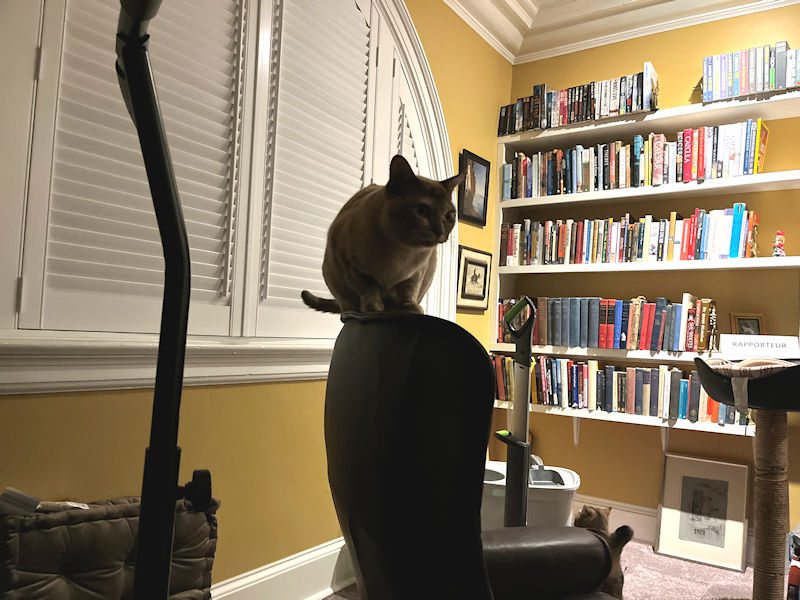
First, we have a little disagreement with Choupette to be resolved.
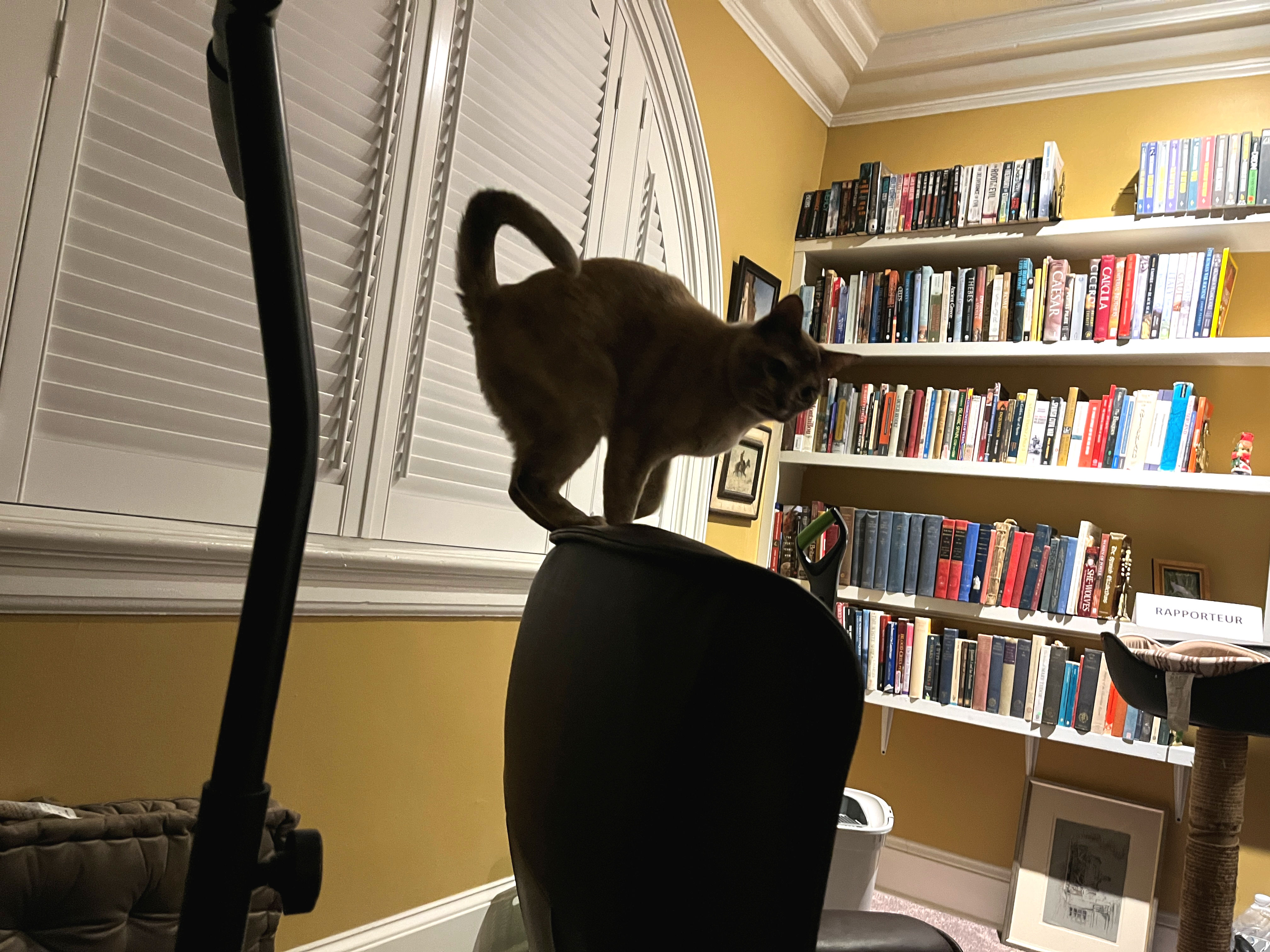
She can't just have everything her own way -- we want to watch the Ottoman docudrama about Sultan Mehmed II's squabbles with Vlad Drăculești, but Choupette . . .

. . . and Melvin as well, wants to watch a nature show about cats.
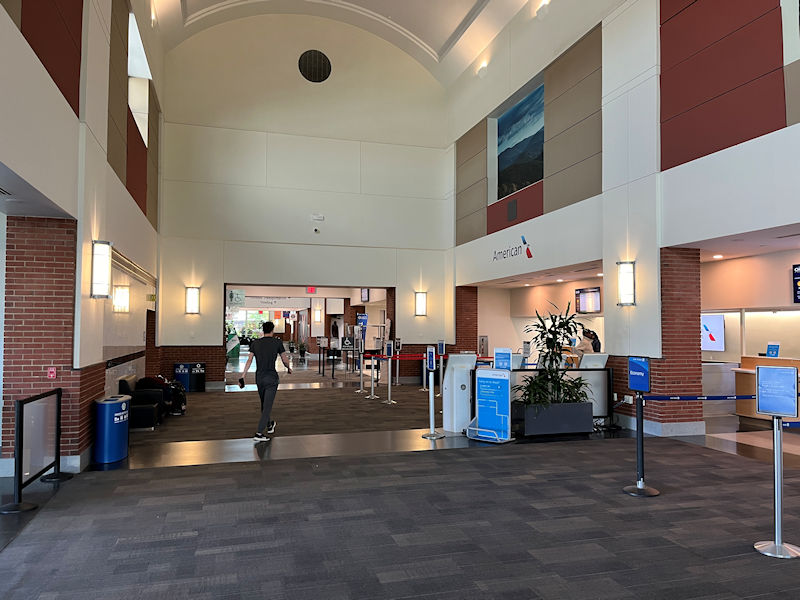
Charlottesville–Albemarle Airport, 20 April 2024:
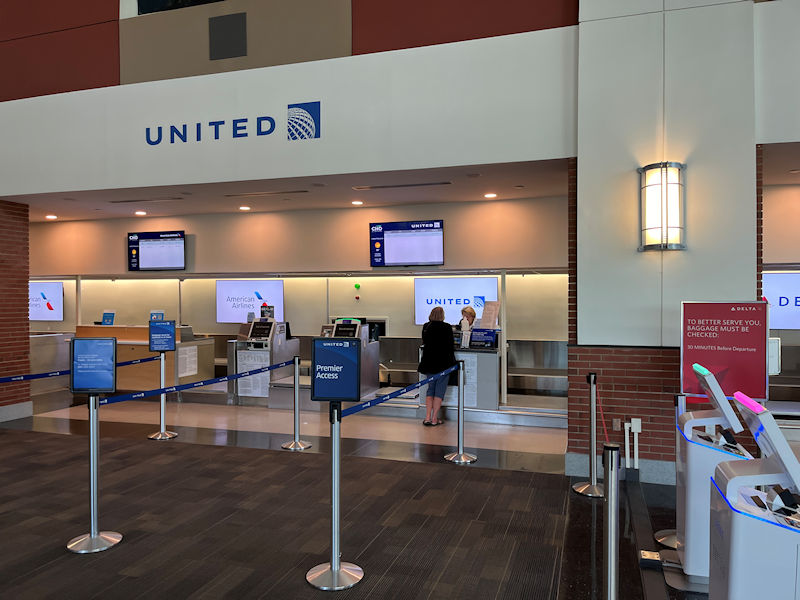
Kristin's on her way to Chicago to visit baby George.

The 19th century community pavillion at the entrance to Staunton's Gypsy Hill Park (better weather at last)

Melvin, determined to command our attention
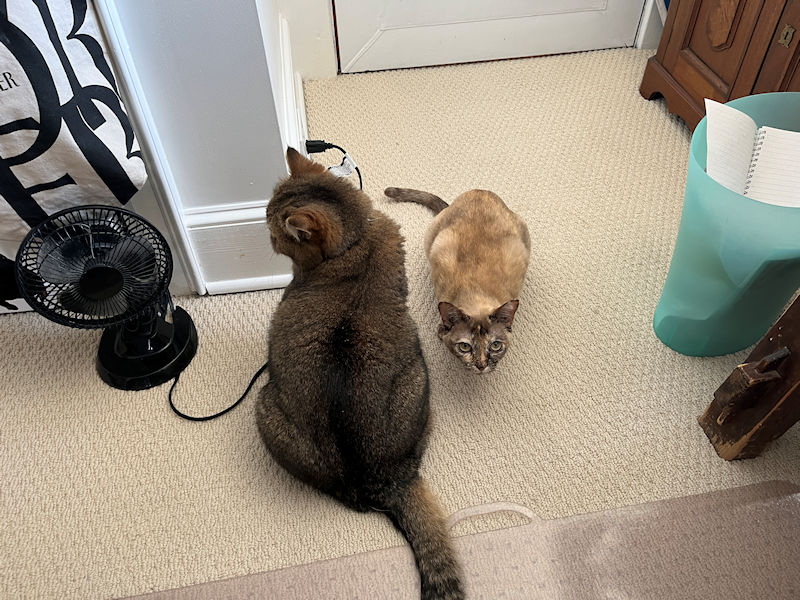
Choupette is, too. We won't get anything done until they go off for another nap.

Meanwhile, they try to stare each other down before an argument gets out of hand. Or out of paw.
A casual walk up through the historic Gospel Hill District on the east side of downtown Staunton
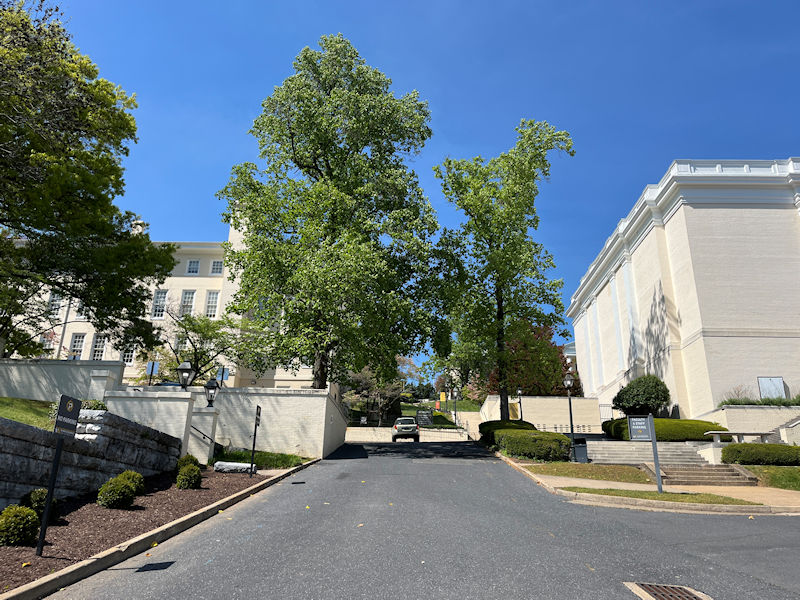
23 April 2024: Up E. Frederick St from the Old Y, we're passing one of many entrances to the Mary Baldwin University campus, bound . . .

. . . up to the beginning of Frederick St, at the . . .
It was near that intersection at the top of the hill that rousing religious meetings were held in a blacksmith shop in the 1790s, hence the name of the district. Must have been fun.

. . . Woodrow Wilson Birthplace facing onto N. Coalter St, along with the Presidential Library and Museum as part of the complex.
For many years, all I knew about Pres Wilson was the '14 Points' proposals for the 1918 Versailles peace talks and that he'd been president of Princeton, which sounded cool. Since moving to Staunton, we've looked into his career a bit more carefully, and it appears that he was a right awful character all round, not least because 'his presidency [served] as the lowest point of the Nadir of American race relations' (Wikipedia).
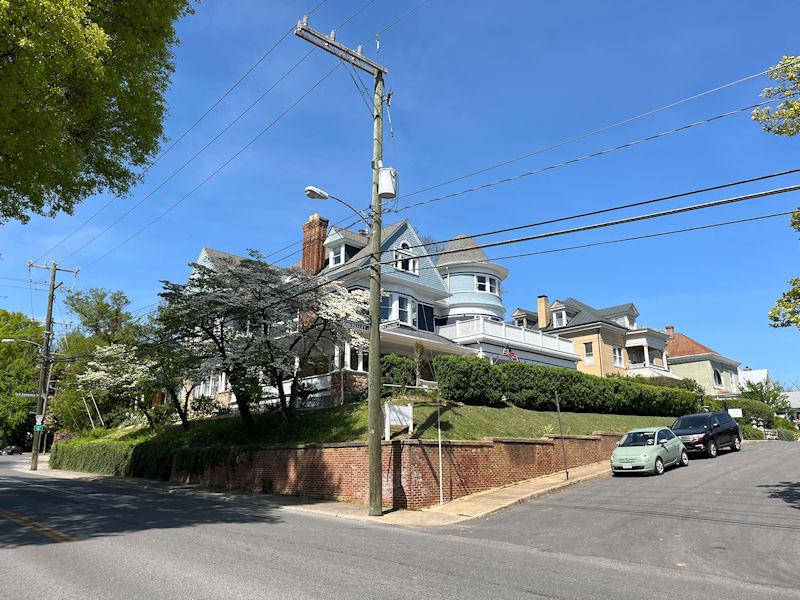
There are five 'Historic Districts' in Staunton, defined largely by architectural periods and styles, and we've walked round them all since arriving here, with photo captions and some expressions of architectural awe. Our first annotated visit to the Gospel Hill District was in December 2019 and our second in November 2021, and our pages included an explanation of the district's present name.
[Wait, we mustn't forget Kalorama St (street of 'nice views'), another part of this district.]
The information we included back then was mainly drawn from the fine brochure entitled A self-guided tour of Staunton's Historic Districts. It seems unnecessary to repeat our captions here -- they can be found on our earlier pages, and more importantly, on the PDF version of the Historic Staunton Foundation's brochure available for free download at https://historicstaunton.org/wp-content/uploads/2014/10/HSF-Walking-Tour-broch.pdf.
To revisit the Gospel Hill District today, we're crossing N Coalter St here, entering Berkeley Place the corner of which is graced by . . .
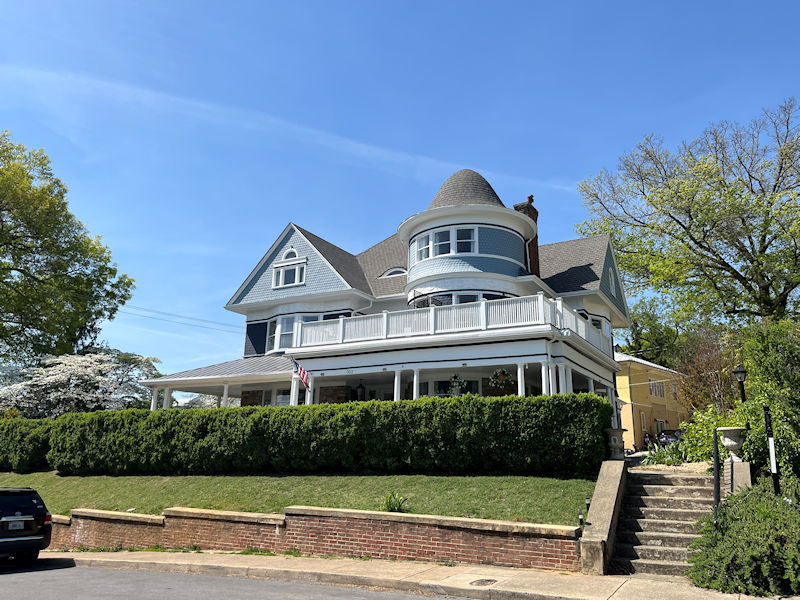
. . . 'The Historic Berkeley Place', a graceful upscale inn originally built as a rich family's home in about 1896.
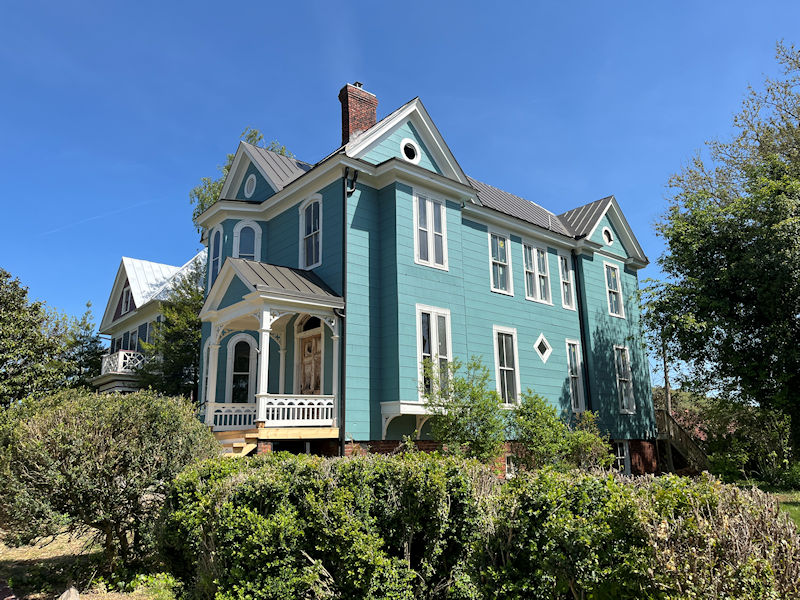
We continue along Berkeley Place. The new window panes on the upper floors are replacements after repairs to the whole portion of the house after a nasty fire some months ago.
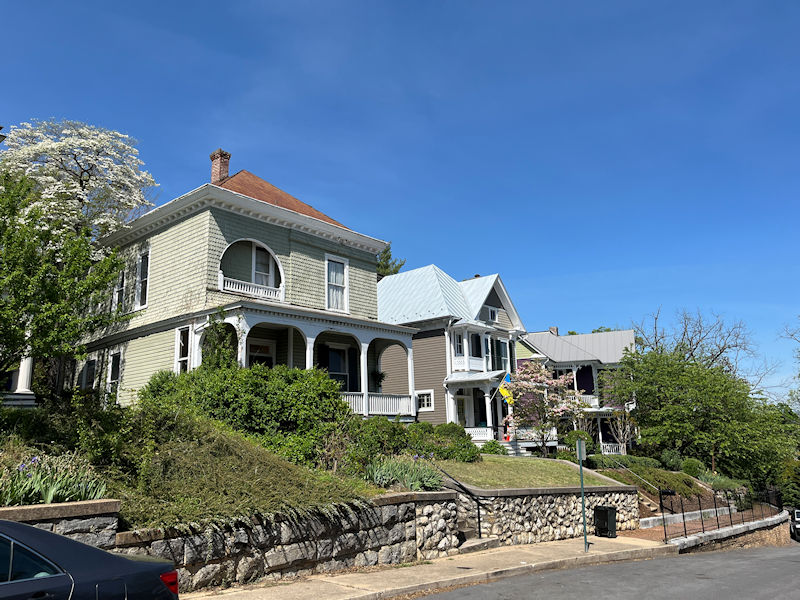
Berkeley Place with Ukrainian flag
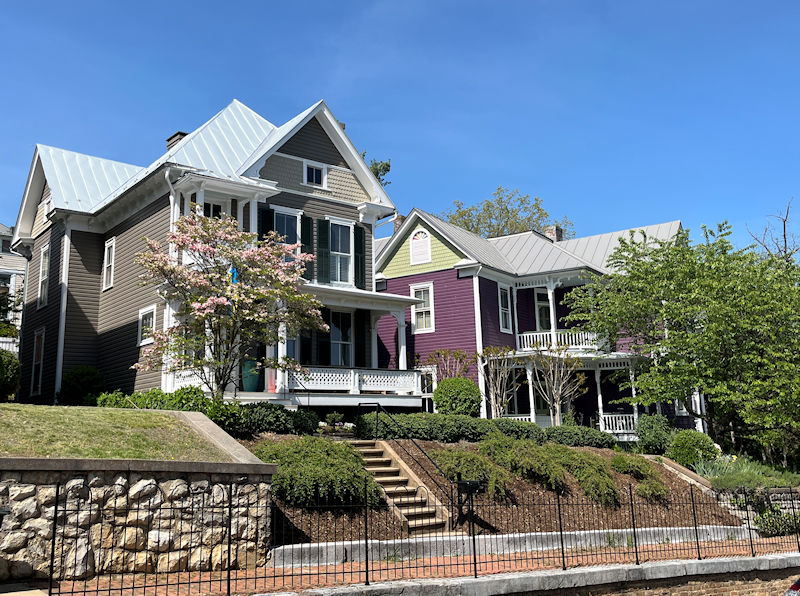
The houses along this street ('Queen Anne, Stick Style, and Colonial Revival') date from the 1880s-1890s.

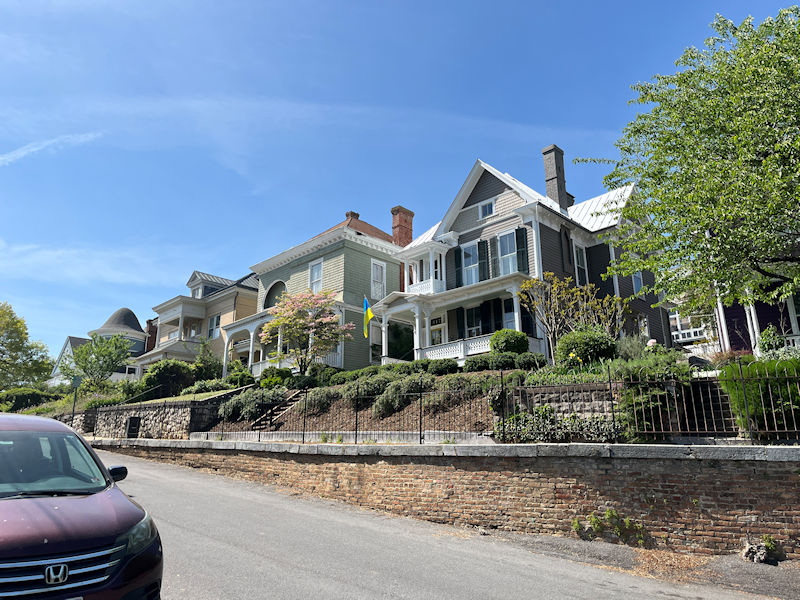
Berkeley Place

We're running out of Berkeley Place now and turning up a steep little connector to . . .
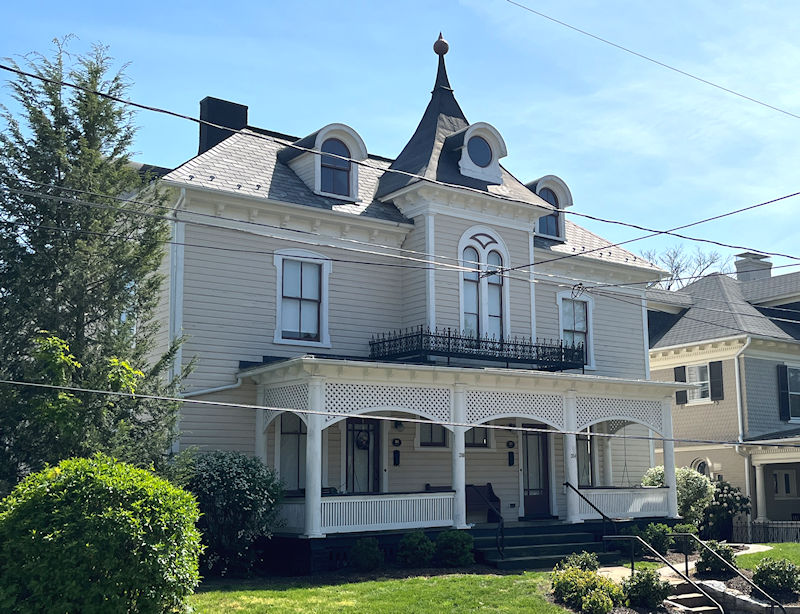
. . . Vine Street.

A neat little house at 340 Vine St
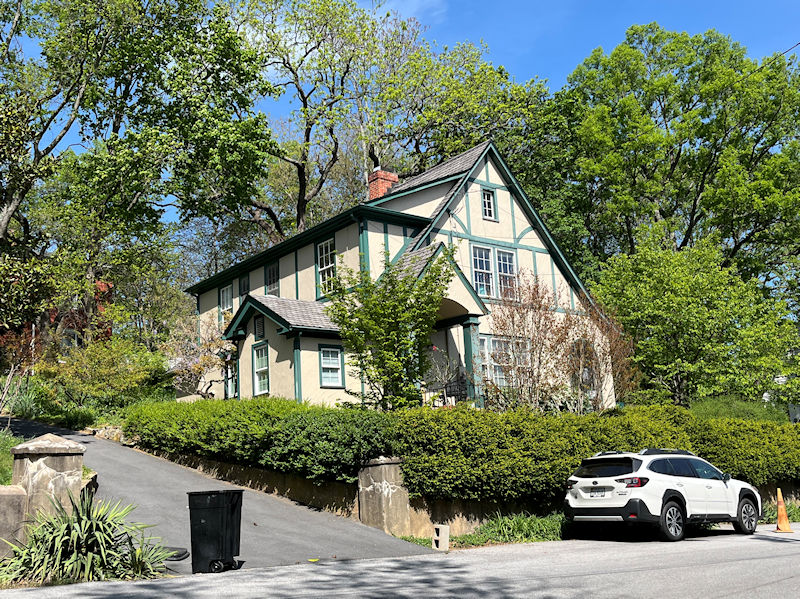
Vine St just ended, we're on Pleasant Terrace now. This charmer always reminds us of an upscale dwarves' cottage in a Disney forest.

Still on Pleasant Terrace, this fascinating piece of work fronts back onto N Coalter St. It's time to test out our new iPhone 13 zoom function.
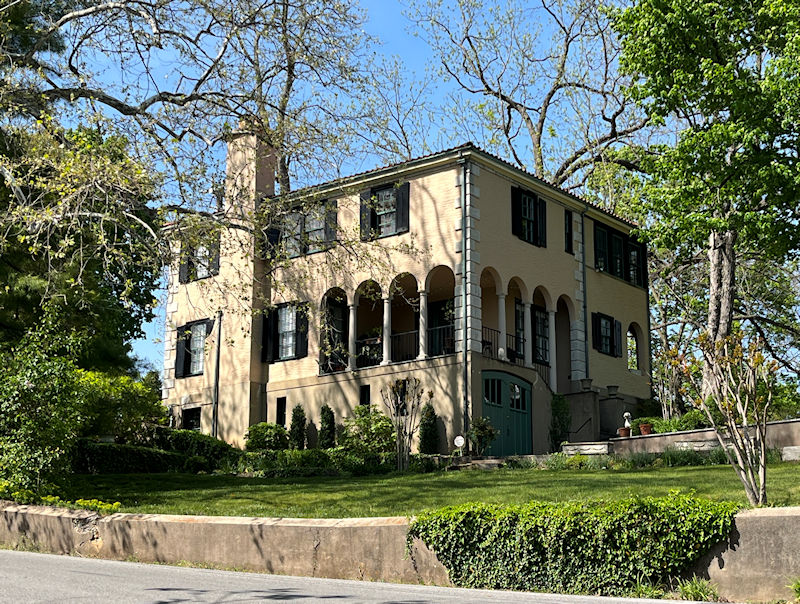
Not bad at all
[that's rhetorical litotes, by the way, 'not bad' instead of 'good']

There's the N Coalter end of the intriguing house we were just zooming.
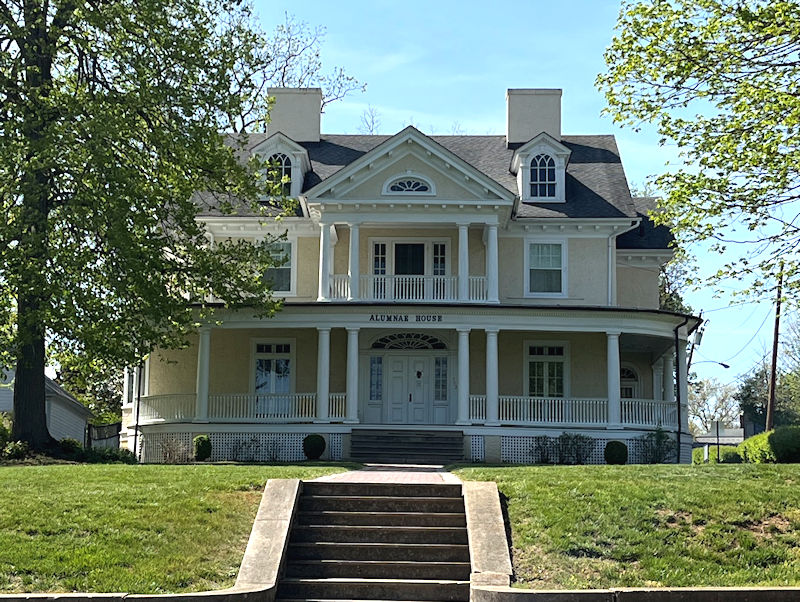
Across N Coalter, that's the alumni guest house on the Mary Baldwin campus -- sorry, 'alumnae', to remind us that residental male students were only admitted in 2017.

Facing N Coalter St, probably part of the MBU campus

Across the street, set back from the corner of N Coalter and Sherwood

At the same intersection, facing onto Sherwood Ave

Here Sherwood Ave takes a sharp turn to the left, in front of this intriguing stone specimen.
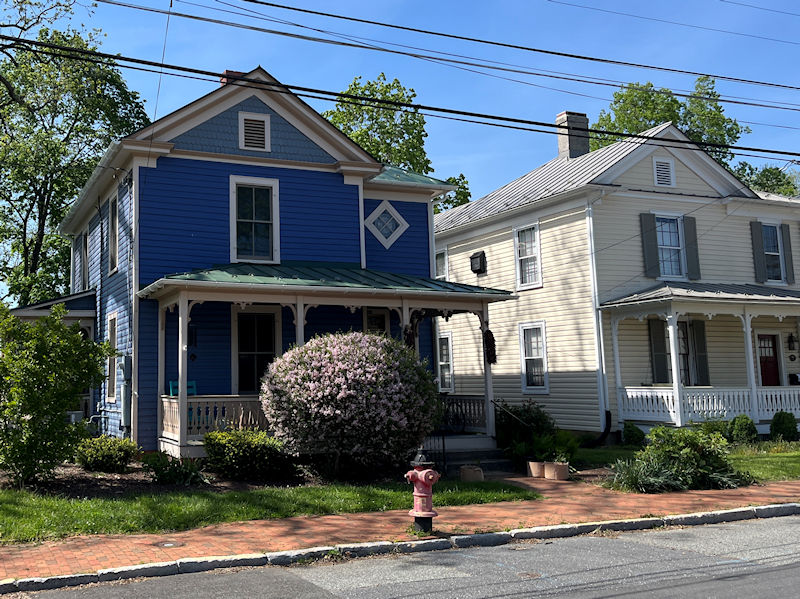
A street of pretty similar houses on this side

At the intersection of Sherwood Ave and Sherwood Lane

Farther along Sherwood Ave, which . . .

. . . just a bit farther on (beyond this one, which would fit in on the northeastern reaches of coastal Canada), turns out to be a dead end at a complex called Waverley Green Properties, focused on a 1906-1921 listed mansion, renovated in 1929 by T J Collins, and divided into four luxury flats in 1972.

So we backtracked and proceeded via narrow Sherwood Lane sharply down to E Beverley -- the main street of downtown Staunton which continues wandering about out here to the northeast.

The 2-room Cabell House on E Beverley is the only surviving exposed log house in town, built by Edmund Cabell, a 'freeman of color', in 1869, and owned for more than a century by descendants of the family. It was purchased by the Historic Staunton Foundation in March 2024 which has begun a programme of rehabilitation.

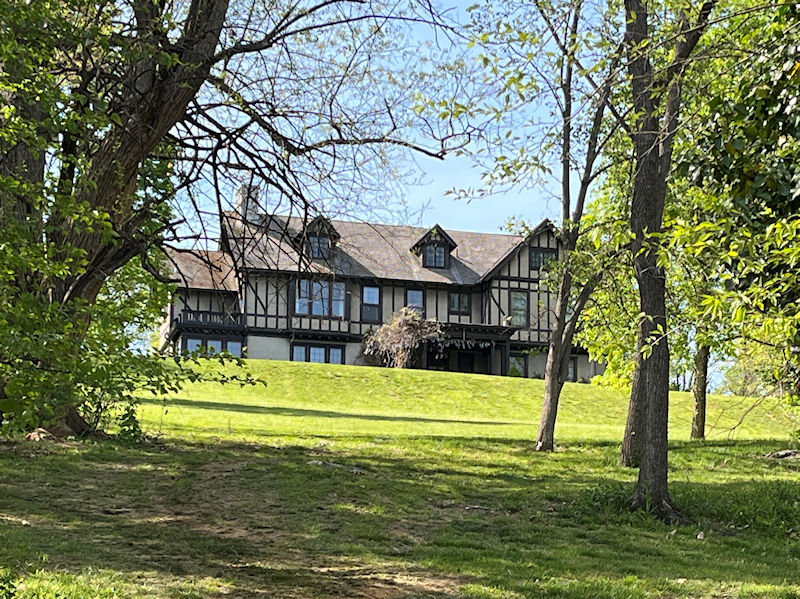
The rear end of a huge Tudorish house that fronts onto Sherwood Ave up the hill
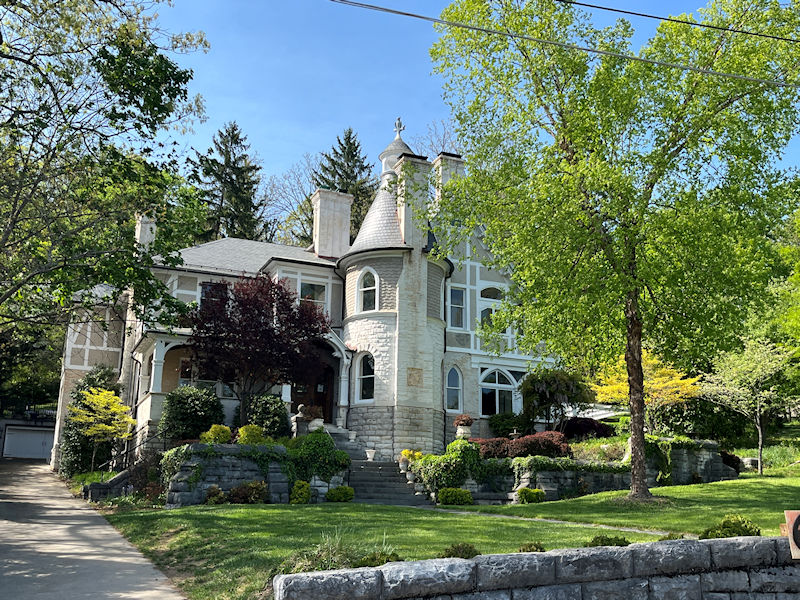
The famous Queen Anne-style Oakdene, built in 1893 by a soon-to-be Virginia Lt Governor; it features an owl standing watch at the top of the tower.
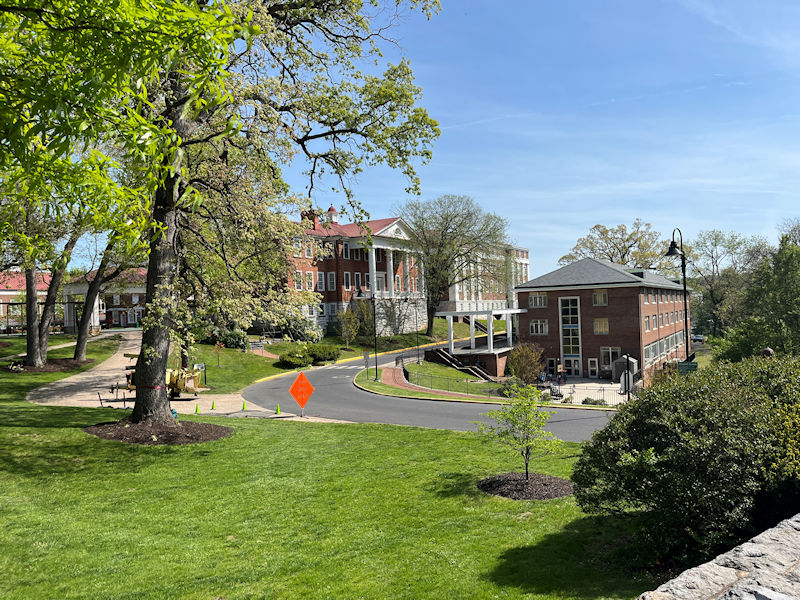
The eastern side of E Beverley from here on is taken up by the beautiful campus of the Virginia School for the Deaf and the Blind, first established in 1839 with the main Greek Revival buildings completed in 1846.
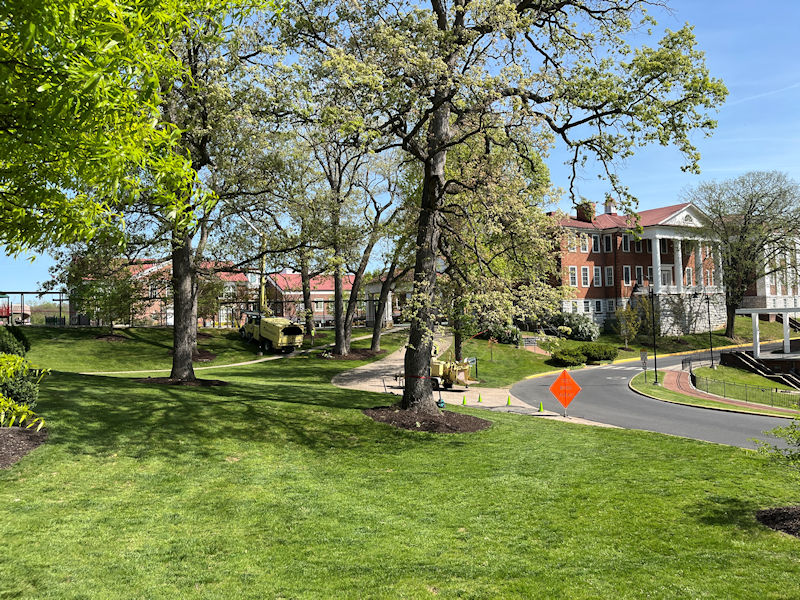
The VSDB campus and . . .

. . . a bit more of it.

Just near the entrance to the campus, a little frame house with a tidy balcony

This place, The Oaks, was the home of Jed Hotchkiss, a famous mapmaker for Robert E Lee and Stonewall Jackson; he built this front neat front in 1888 onto an existing ca.1840 house.
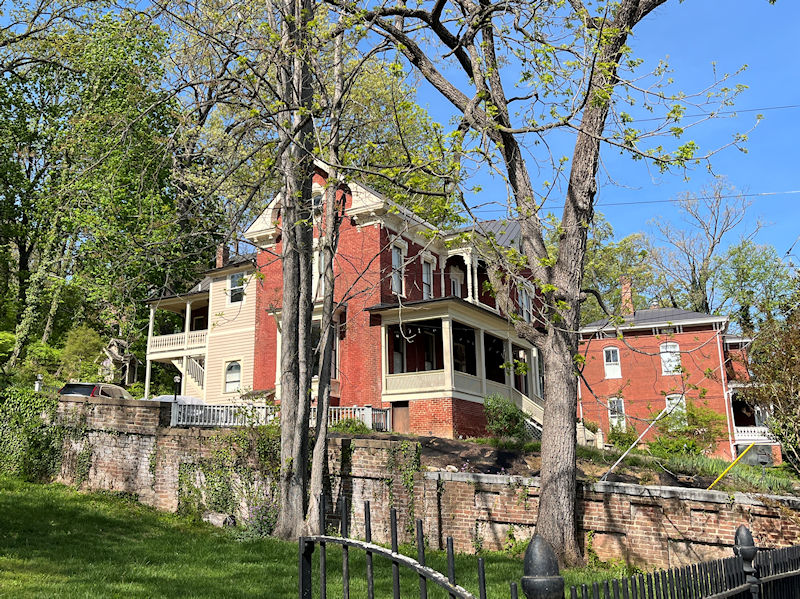
506 E Beverley
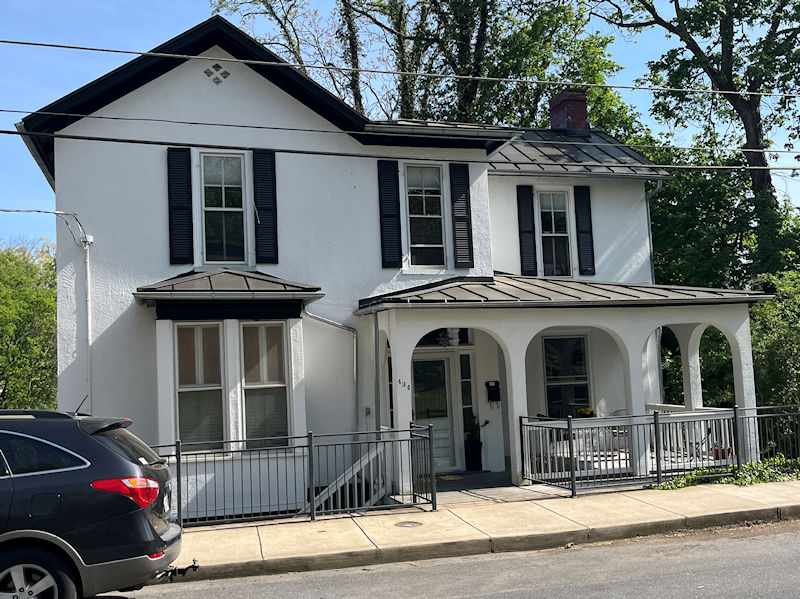
434 E Beverley
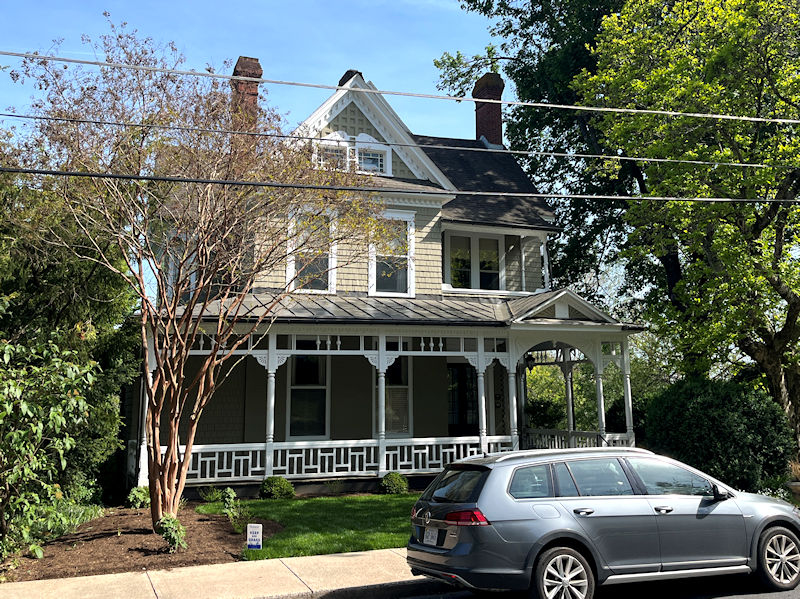
This one's for sale, at the moment.
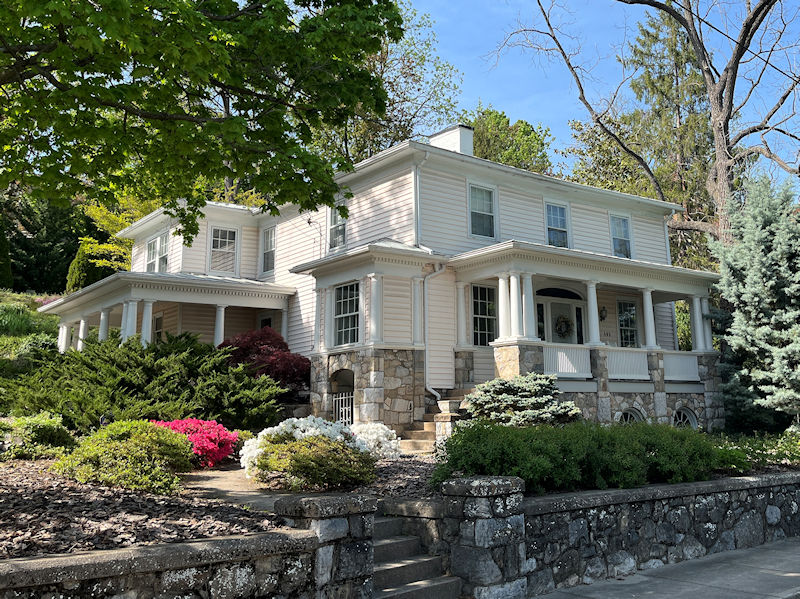
405 E Beverley, at the corner of E Beverley and Berkeley Place running back up the hill
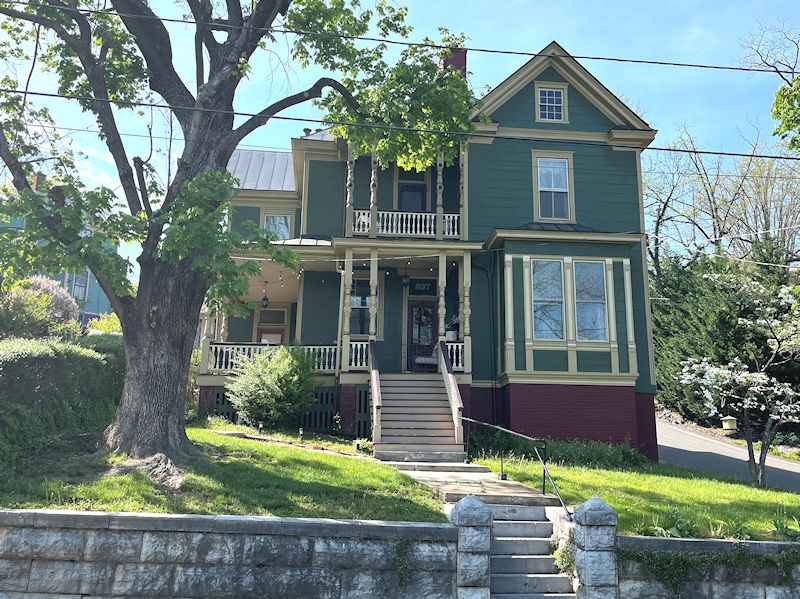
The Gospel Hill Manor B&B, with Berkeley Pl going back up the hill

Dating from 1848, this house has been owned by 'Stonewall Jackson's engineer, the founder of Staunton's oldest bank, and a Virginia Supreme Court justice'. The original detached kitchen is incorporated on the right.

A more recent two family building, on the corner with S Coalter St, each family getting its own hexagonal tower.

This is the Woodrow Wilson Museum, built ca. 1870 and remodeled by T J Collins in 1898, now part of the campus of the President Library and Museum, which also comprises the 'Manse' (Wilson's birthplace), the Smith House with the gift shop, the Archives & Research Center next door on E Beverley, 'and several other support buildings' as well as the 'historic gardens' (which unfortunately got whipped by a horrible blight a few years ago).
In the garage on the right, there's a restored 1919 Pierce-Arrow automobile, the presidental auto that Wilson's friends bought for him when he left office, donated to the library by his widow.
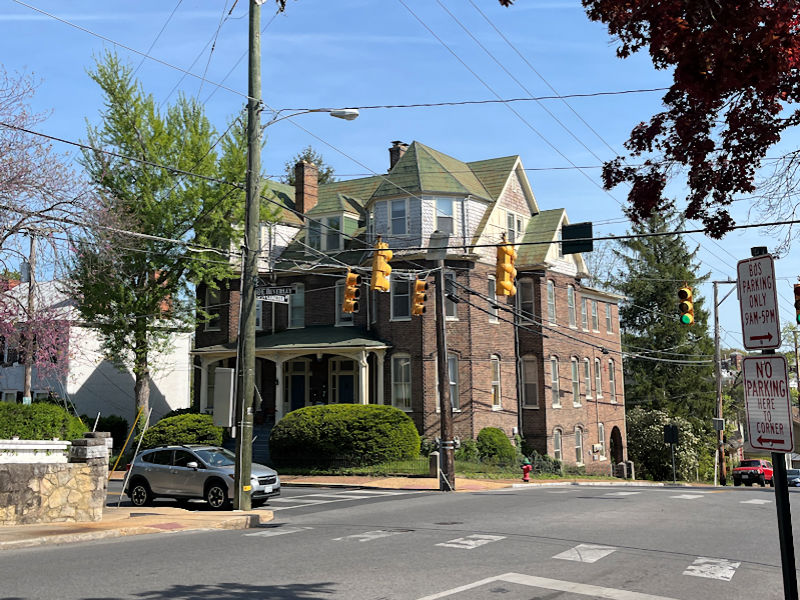
Across S Coalter St
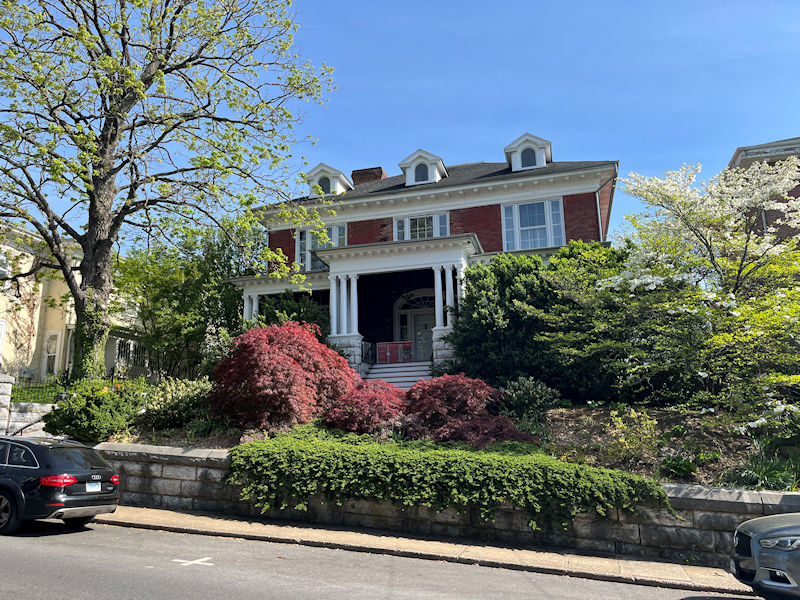
Continuing down E Beverley, here's one of several imposing houses (we're bypassing Kalorama St today, though it's the jewel in the Gospel Hill crown, by most measures).
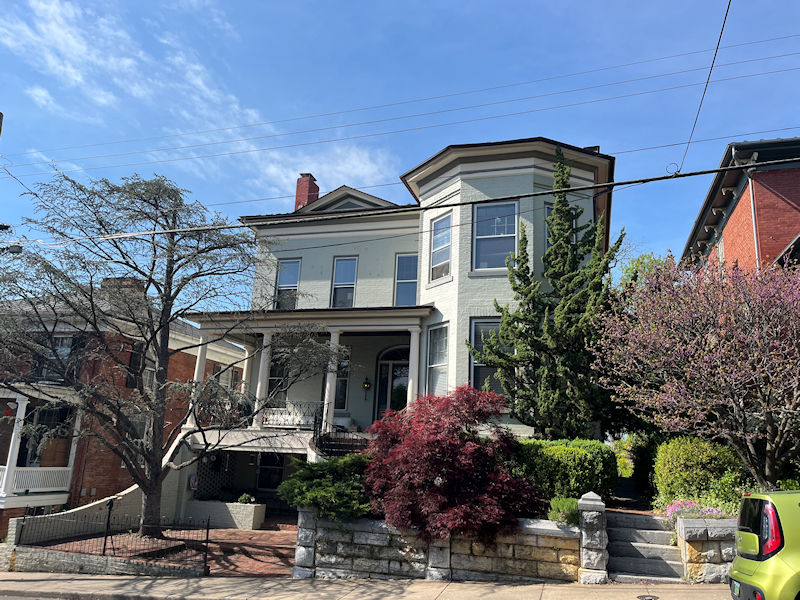
And another
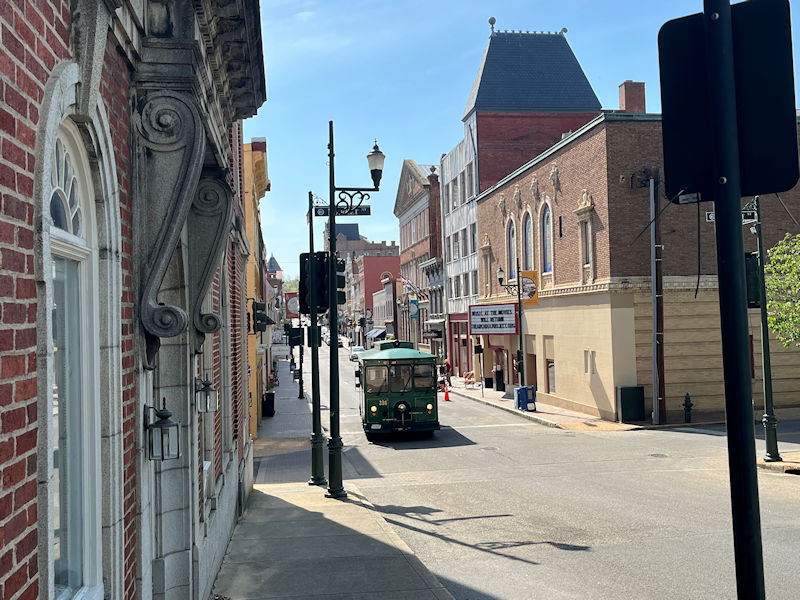
Where E Beverley joins the downtown thoroughfare -- with the trolley turning up to the left on S Market St.

The American Shakespeare Center with its replica of the Blackfriars Playhouse for indoor performances for the early 17th century London audiences (not for the 'groundlings' at the Globe across the river).


Across the street from the Blackfriars
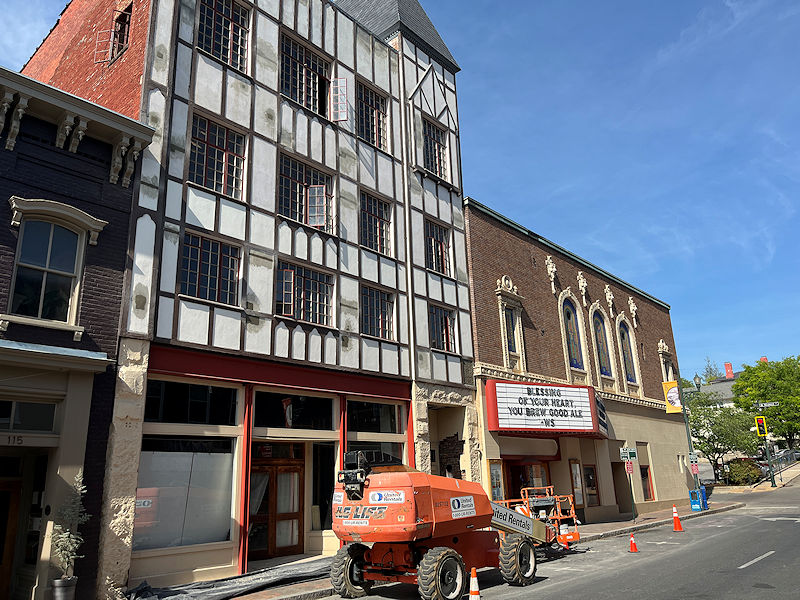
On E Beverley St, that's a complex of disused cinema theatre and more, the 'Arcadia Project', being renovated to create a multi-use community cultural centre, recently with a healthy government grant.
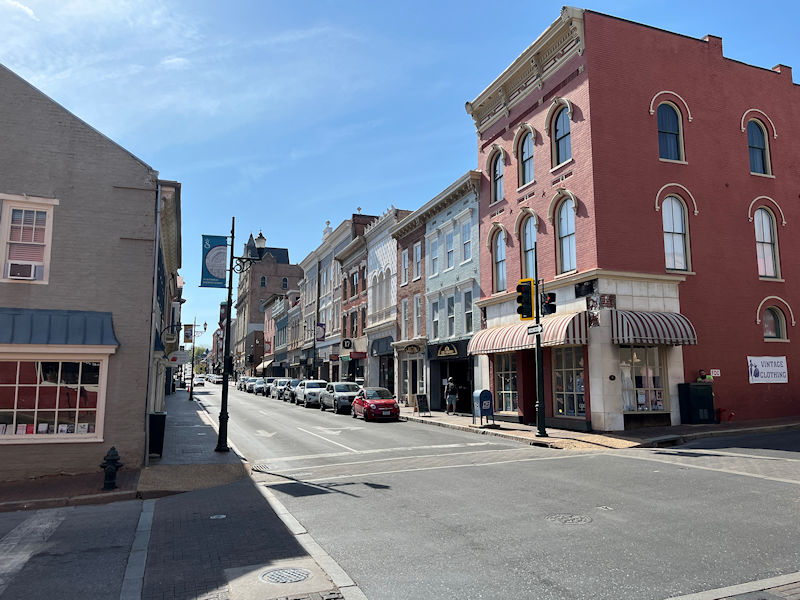
Farther along E Beverley, soon to become W Beverley another block on

Looking back along E Beverley, past the Staunton city court on the left, the Arcadia Project, and up the street to the Gospel Hill District
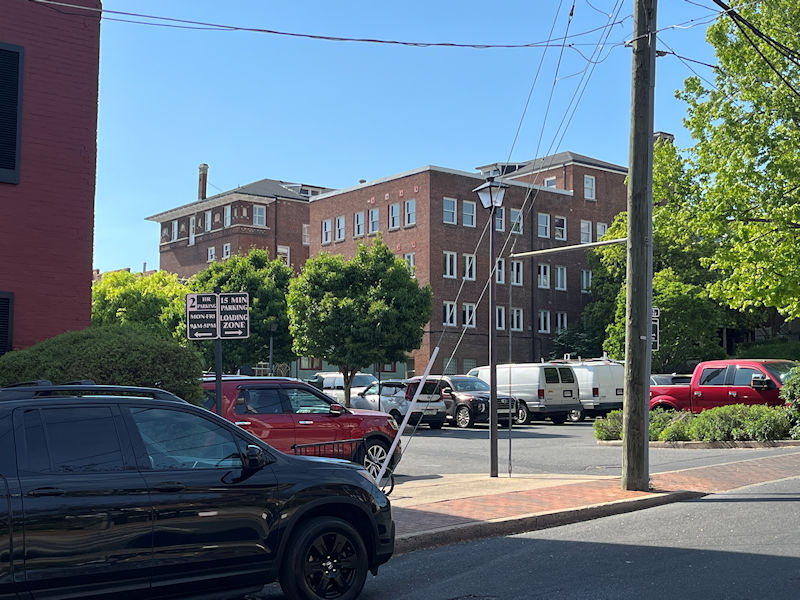
That monstrosity is the back end of our Old Y condo building, built in 1914 for the YMCA with donations from the estate of the agricultural inventor Cyrus McCormick.
That's enough for today.
Next up: A few last foresty walks before heading out to the Great Midwest

 Dwight Peck's personal website
Dwight Peck's personal website






























































